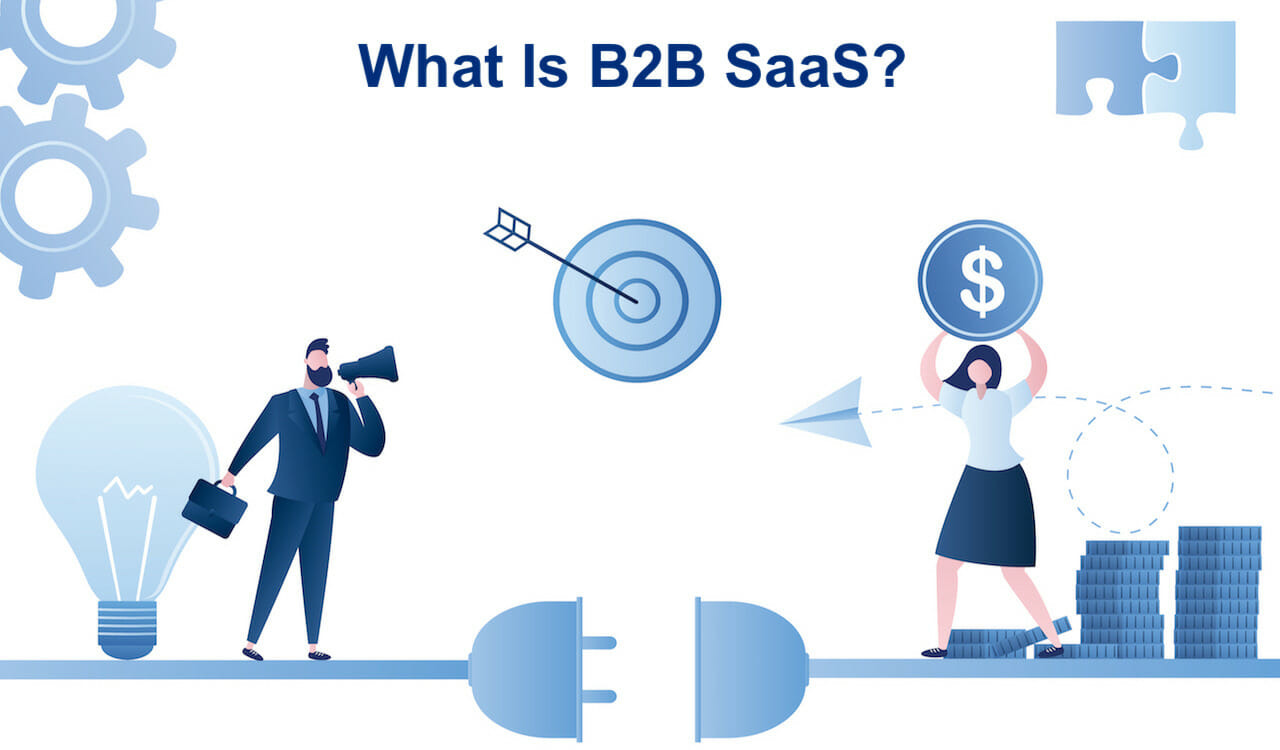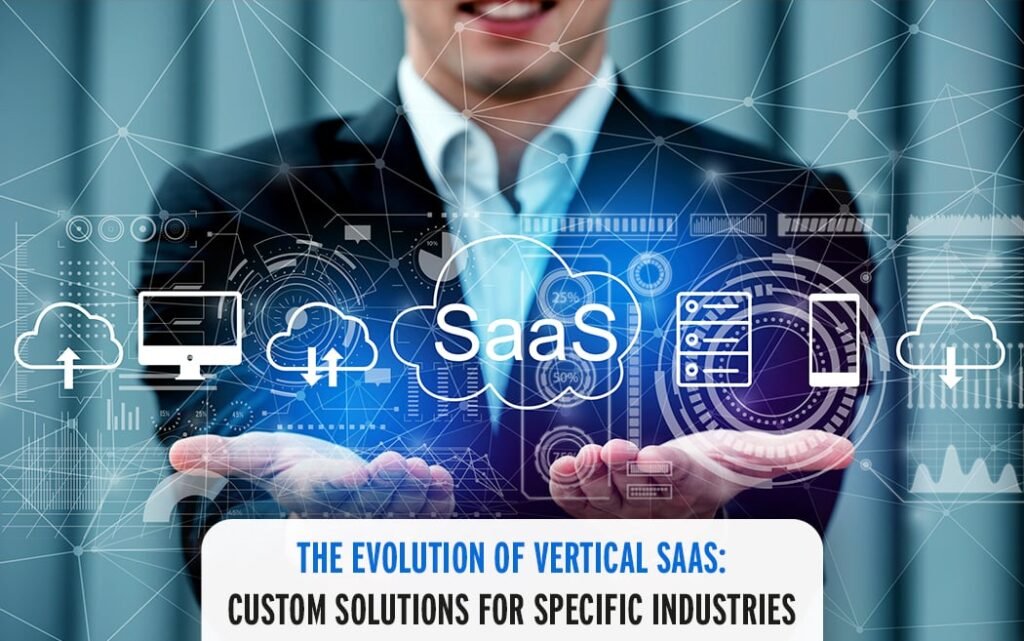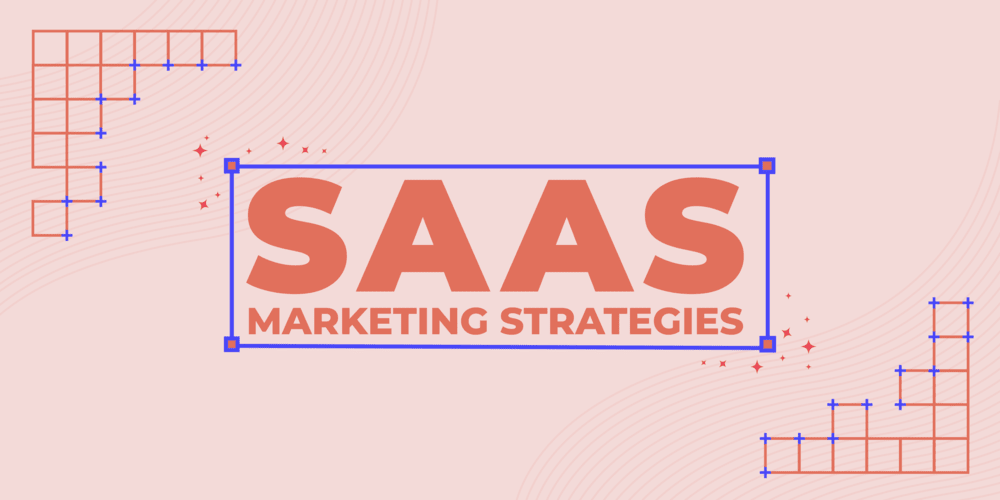B2B SaaS stands for Business-to-Business Software as a Service. It refers to cloud-based software solutions sold to businesses.
B2B SaaS platforms help companies streamline operations by providing access to software over the internet. These solutions eliminate the need for physical installation and maintenance. Businesses benefit from scalable, subscription-based pricing models. Users can access the software from anywhere with an internet connection.
Popular examples include CRM tools, project management software, and accounting systems. B2B SaaS enhances efficiency, reduces costs, and supports remote work. Companies rely on these solutions to stay competitive in the digital age. The demand for B2B SaaS continues to grow as more businesses shift to cloud-based technologies.

Credit: www.singlegrain.com
B2b Saas Basics
B2B SaaS stands for Business-to-Business Software as a Service. It refers to software solutions delivered over the internet, designed to help businesses operate more efficiently. These services are subscription-based, providing continuous updates and support. Understanding the basics of B2B SaaS is essential for businesses looking to streamline their operations and stay competitive in the digital age.
Key Features
B2B SaaS platforms offer a range of features that cater to various business needs. Here are some of the key features:
- Scalability: B2B SaaS solutions can scale with your business. As your needs grow, the software can handle increased workloads without significant changes.
- Accessibility: These platforms are accessible from anywhere with an internet connection. This enables remote work and improves collaboration among teams.
- Automatic Updates: B2B SaaS providers manage software updates. This ensures users always have access to the latest features and security improvements.
- Cost-Effective: Subscription-based pricing models eliminate the need for large upfront investments. Businesses can manage their budget more effectively.
- Integration: Many B2B SaaS solutions offer seamless integration with other tools. This creates a unified ecosystem for various business operations.
Here’s a table summarizing these key features:
| Feature | Description |
|---|---|
| Scalability | Ability to grow with your business needs |
| Accessibility | Available from any location with internet access |
| Automatic Updates | Ensures the latest features and security |
| Cost-Effective | Subscription-based pricing for budget management |
| Integration | Seamless integration with other tools |
Market Overview
The B2B SaaS market is growing rapidly. Businesses across industries are adopting SaaS solutions to improve efficiency and reduce costs. Here are some insights:
- Market Size: The global B2B SaaS market is worth billions. It is expected to grow even further in the coming years.
- Industry Adoption: Industries such as finance, healthcare, and retail are leading adopters. They use SaaS solutions for various functions like CRM, HR, and project management.
- Emerging Trends: AI and machine learning are becoming integral to B2B SaaS. These technologies are enhancing automation and decision-making capabilities.
- Competitive Landscape: The market is highly competitive. Major players include Salesforce, Microsoft, and Adobe, along with numerous startups.
Here’s a table providing a snapshot of the market:
| Aspect | Details |
|---|---|
| Market Size | Billions of dollars, growing annually |
| Industry Adoption | Finance, healthcare, retail |
| Emerging Trends | AI, machine learning |
| Competitive Landscape | Salesforce, Microsoft, Adobe, startups |

Credit: nogood.io
Benefits For Businesses
B2B SaaS, or Business-to-Business Software as a Service, is a cloud-based service where businesses provide software solutions to other businesses. These solutions help companies streamline operations, improve efficiency, and reduce costs. Now, let’s explore the benefits for businesses using B2B SaaS.
Cost Efficiency
B2B SaaS solutions are highly cost-efficient for businesses. Here are some key reasons why:
- No Upfront Costs: Traditional software often requires a hefty initial investment. B2B SaaS, on the other hand, operates on a subscription model, eliminating large upfront costs.
- Lower Maintenance Costs: With B2B SaaS, the service provider handles maintenance and updates. This reduces the need for in-house IT staff and resources.
- Pay-as-You-Go: Businesses only pay for what they use. This makes it easier to manage budgets and scale operations as needed.
Additionally, B2B SaaS helps businesses save on hardware costs. Since the software is hosted in the cloud, there’s no need for expensive servers and infrastructure. Companies can also avoid the costs associated with software licensing and upgrades.
| Traditional Software | B2B SaaS |
|---|---|
| High upfront costs | No upfront costs |
| Maintenance by in-house IT | Maintenance by provider |
| Fixed costs regardless of usage | Pay-as-you-go |
Scalability
Scalability is another significant benefit of B2B SaaS solutions. Businesses can easily scale their operations without worrying about infrastructure constraints. Here are some ways B2B SaaS enables scalability:
- Adjustable Resources: Companies can increase or decrease resources based on their needs. This flexibility ensures they only pay for what they use.
- Global Reach: B2B SaaS platforms are accessible from anywhere with an internet connection. This allows businesses to expand their operations globally without geographical limitations.
- Automatic Updates: SaaS providers regularly update their software. Businesses always have access to the latest features and improvements without manual intervention.
Scalability also means businesses can quickly adapt to changing market conditions. They can deploy new features or services faster than with traditional software. This agility gives them a competitive edge in the market.
In summary, B2B SaaS offers a scalable solution that grows with your business. It’s an ideal choice for companies looking to expand without the hassle of managing IT infrastructure.
Common Use Cases
Business-to-Business Software as a Service (B2B SaaS) refers to cloud-based software solutions offered to other businesses. These tools streamline operations, improve efficiency, and drive growth. Understanding common use cases helps identify the right tools for your business needs.
Crm Solutions
Customer Relationship Management (CRM) solutions are essential for managing interactions with potential and existing customers. They help businesses organize, automate, and synchronize sales, marketing, customer service, and technical support.
- Lead Management: Track and manage potential customers throughout the sales funnel.
- Sales Automation: Automate repetitive tasks to focus on closing deals.
- Customer Support: Provide timely and efficient support to your customers.
- Reporting and Analytics: Gain insights from data to make informed decisions.
Many businesses use CRM solutions to improve customer satisfaction and retention. Key features include contact management, interaction tracking, and pipeline management.
| Feature | Benefit |
|---|---|
| Contact Management | Organize and access customer details easily. |
| Interaction Tracking | Keep records of all customer interactions. |
| Pipeline Management | Visualize and manage your sales process. |
Project Management Tools
Project management tools are vital for planning, executing, and closing projects efficiently. These tools help teams collaborate, track progress, and meet deadlines.
- Task Management: Assign and track tasks to ensure completion.
- Time Tracking: Monitor time spent on tasks to improve productivity.
- Collaboration: Enable team members to work together seamlessly.
- Resource Allocation: Allocate resources effectively to avoid bottlenecks.
Project management tools often include features like Gantt charts, Kanban boards, and time tracking.
| Feature | Benefit |
|---|---|
| Gantt Charts | Visualize project timelines and dependencies. |
| Kanban Boards | Manage tasks and workflows visually. |
| Time Tracking | Monitor time spent on various tasks. |
Using project management tools, teams can stay organized, meet deadlines, and deliver high-quality results.

Credit: www.madx.digital
Challenges Faced
Business-to-Business Software as a Service (B2B SaaS) refers to cloud-based applications designed for businesses. These services streamline operations, enhance productivity, and drive growth. Despite its many advantages, B2B SaaS faces several challenges that can hinder its effectiveness.
Data Security
Data security is a top concern for B2B SaaS providers. Protecting sensitive business information from breaches is crucial. Companies must ensure data encryption both in transit and at rest. Regular security audits are essential to identify vulnerabilities.
- Unauthorized access to data
- Data breaches and leaks
- Compliance with regulations like GDPR and CCPA
- Secure authentication methods
Here’s a table showing security measures:
| Security Measure | Description |
|---|---|
| Data Encryption | Encrypting data to prevent unauthorized access |
| Multi-Factor Authentication | Adding extra layers of security |
| Regular Audits | Checking systems for vulnerabilities |
Implementing robust data security measures protects customer trust and ensures compliance with legal standards.
Integration Issues
Integration issues pose significant hurdles for B2B SaaS solutions. Businesses use multiple software systems that need to work together seamlessly. Integration problems can disrupt workflows and reduce efficiency.
- Compatibility with existing systems
- Data consistency across platforms
- API limitations and restrictions
- High integration costs
Here’s an ordered list of steps to address integration issues:
- Assess compatibility with existing systems
- Utilize middleware solutions
- Ensure data synchronization
- Plan for integration costs
A well-planned integration strategy helps maintain data consistency and enhances overall productivity.
Choosing The Right Provider
B2B SaaS, or Business-to-Business Software as a Service, is a cloud-based service where businesses provide software solutions to other businesses. This model helps companies improve efficiency and scalability without the need for heavy IT infrastructure. Choosing the right provider is crucial for ensuring that your business gets the most out of its investment in SaaS. This section will guide you through the essential criteria for selection and highlight some of the top providers in the industry.
Criteria For Selection
Choosing the right B2B SaaS provider involves several key criteria. These factors ensure that the solution aligns with your business needs and goals.
- Scalability: The solution should grow with your business. Consider providers that offer scalable options.
- Integration: Ensure the software integrates seamlessly with your existing systems. Compatibility is key.
- Security: Data protection is crucial. Look for providers with robust security measures.
- Customer Support: Reliable support can save time and money. Choose providers with excellent customer service.
- Cost: Evaluate the pricing structure. Make sure it fits within your budget without sacrificing features.
Here’s a table summarizing these criteria:
| Criteria | Importance |
|---|---|
| Scalability | High |
| Integration | High |
| Security | Very High |
| Customer Support | High |
| Cost | Medium |
By focusing on these criteria, you can narrow down your options and find a provider that best suits your business needs.
Top Providers
Several providers stand out in the B2B SaaS landscape. These companies offer top-notch services that cater to various business needs.
- Salesforce: Known for its CRM solutions, Salesforce offers a scalable and robust platform. It’s ideal for sales, marketing, and customer service.
- HubSpot: HubSpot provides an all-in-one marketing, sales, and service platform. It’s user-friendly and integrates well with other software.
- Microsoft Dynamics 365: This provider offers a suite of intelligent business applications. It combines CRM and ERP capabilities to streamline operations.
- Slack: Slack is popular for its communication and collaboration tools. It’s great for teams looking to improve internal communication.
- Zendesk: Zendesk specializes in customer service solutions. It offers a powerful helpdesk platform that’s easy to use and highly customizable.
These providers are leading the way in B2B SaaS, offering solutions that help businesses thrive. Whether you need CRM, marketing tools, or customer service platforms, these companies have you covered.
Future Trends
B2B SaaS (Business-to-Business Software as a Service) refers to cloud-based software solutions tailored for businesses. These tools help businesses automate and streamline operations. The future of B2B SaaS is exciting and full of promising trends. Let’s explore some key future trends in B2B SaaS that are set to transform the industry.
Ai Integration
AI integration is a game-changer in B2B SaaS. AI tools can process large amounts of data quickly. They provide valuable insights and automate tasks. Here are some ways AI is revolutionizing B2B SaaS:
- Predictive Analytics: AI helps predict customer behavior. Businesses can make data-driven decisions.
- Personalization: AI tailors experiences for individual users. This increases customer satisfaction.
- Automation: Routine tasks are automated. This saves time and reduces human error.
Let’s look at a table that shows the impact of AI integration in B2B SaaS:
| AI Feature | Benefit | Example |
|---|---|---|
| Chatbots | 24/7 Customer Support | Instant query resolution |
| Machine Learning | Improved Decision Making | Predictive maintenance |
| Natural Language Processing | Enhanced User Interaction | Voice assistants |
Remote Work Adaptations
Remote work has become a new norm. B2B SaaS is evolving to support this trend. Companies need tools to manage remote teams effectively. Here are some key adaptations:
- Cloud Collaboration: Team members can work together in real-time. Tools like Google Workspace are essential.
- Project Management: SaaS solutions like Trello and Asana help track progress. These tools keep teams organized.
- Cybersecurity: Remote work increases security risks. SaaS providers are enhancing security features.
Here’s a table summarizing the remote work adaptations in B2B SaaS:
| Adaptation | Benefit | Example |
|---|---|---|
| Video Conferencing | Seamless Communication | Zoom, Microsoft Teams |
| File Sharing | Easy Access to Documents | Dropbox, OneDrive |
| Time Tracking | Monitor Productivity | Hubstaff, Toggl |
Success Stories
B2B SaaS (Business-to-Business Software as a Service) involves delivering software applications to businesses over the internet. These solutions help companies streamline operations, manage data, and enhance productivity. Success stories in B2B SaaS highlight how companies benefit from these tools. Below, we explore some case studies that showcase significant achievements in marketing and finance.
Case Study: Marketing
One notable B2B SaaS success story in marketing is HubSpot. HubSpot provides a comprehensive marketing platform, helping businesses attract, engage, and delight customers. Their tools include CRM, email marketing, social media management, and analytics.
HubSpot’s Impact:
- Increased Lead Generation: A client used HubSpot to generate over 200% more leads within six months.
- Enhanced Customer Engagement: Automated emails and personalized content improved customer interaction.
- Improved ROI: Marketing campaigns became more effective, resulting in a 150% increase in ROI.
A specific example is a mid-sized company that saw impressive results using HubSpot:
| Metric | Before HubSpot | After HubSpot |
|---|---|---|
| Leads per Month | 100 | 300 |
| Customer Engagement Rate | 20% | 45% |
| Marketing ROI | 50% | 125% |
Case Study: Finance
In the finance sector, B2B SaaS solutions like QuickBooks have revolutionized accounting and financial management. QuickBooks offers cloud-based accounting software that simplifies bookkeeping, invoicing, and payroll management.
QuickBooks’ Impact:
- Streamlined Accounting Processes: Automated tasks reduced manual errors and saved time.
- Real-time Financial Insights: Businesses gained instant access to financial data and reports.
- Cost Savings: Reduced administrative costs by 40% through automation.
An example of QuickBooks’ success is a small business that transformed its financial operations:
| Metric | Before QuickBooks | After QuickBooks |
|---|---|---|
| Monthly Accounting Hours | 80 | 30 |
| Error Rate | 10% | 1% |
| Administrative Costs | $5,000 | $3,000 |
Getting Started
B2B SaaS stands for Business-to-Business Software as a Service. It refers to cloud-based software solutions designed to help businesses operate efficiently. These solutions are delivered over the internet, eliminating the need for physical installations. Getting started with B2B SaaS can seem daunting, but with the right steps, it becomes manageable and rewarding.
Implementation Steps
To get started with B2B SaaS, follow these implementation steps:
- Identify Your Needs: Understand what your business needs from the software. This helps in selecting the right solution.
- Research Solutions: Look for SaaS providers that offer features aligning with your requirements.
- Request Demos: Many SaaS providers offer free demos. Use these to evaluate the software.
- Compare Features: Make a list of features each provider offers. Compare them to see which fits best.
Once you have selected a provider, follow these steps for a smooth implementation:
- Sign Up: Register for the service. Most providers have a straightforward sign-up process.
- Setup and Configuration: Configure the software settings according to your business needs.
- Data Migration: Transfer your existing data to the new system. Ensure data integrity during this process.
- Training: Train your team to use the new software efficiently. Many providers offer training resources.
- Go Live: Launch the software for everyday use. Monitor the initial performance closely.
Best Practices
To ensure successful implementation and usage of B2B SaaS, follow these best practices:
- Regular Updates: Keep your software updated to benefit from new features and security patches.
- Engage with Support: Utilize customer support services provided by the SaaS vendor for any issues.
- Monitor Usage: Regularly check how your team is using the software. Identify areas for improvement.
- Optimize Settings: Customize the software settings to fit your business processes better.
Additionally, consider these tips for long-term success:
| Tip | Description |
|---|---|
| Feedback Loop | Regularly collect feedback from users to improve the software experience. |
| Scalability | Ensure the software can scale with your business growth. |
| Security | Implement strong security measures to protect your data. |
Following these best practices will help you maximize the benefits of your B2B SaaS solution.
Frequently Asked Questions
What Is B2b Saas?
B2B SaaS stands for Business-to-Business Software as a Service. It refers to cloud-based software solutions provided to other businesses. These services help companies streamline operations, improve efficiency, and enhance productivity.
How Does B2b Saas Work?
B2B SaaS solutions are hosted in the cloud. Businesses access these services via the internet. They usually pay a subscription fee. The provider handles maintenance, updates, and support.
What Are The Benefits Of B2b Saas?
B2B SaaS offers scalability, cost-effectiveness, and flexibility. It eliminates the need for on-premises infrastructure. Businesses can easily scale services up or down based on their needs.
What Industries Use B2b Saas?
Many industries use B2B SaaS, including finance, healthcare, marketing, and e-commerce. These solutions help various sectors optimize operations and improve customer experiences.
Conclusion
Understanding B2B SaaS is crucial for modern businesses seeking efficiency. It offers scalable, cost-effective solutions tailored to enterprise needs. Embracing this technology can drive growth, streamline operations, and enhance customer satisfaction. Stay ahead by integrating B2B SaaS into your business strategy and reaping its numerous benefits.



